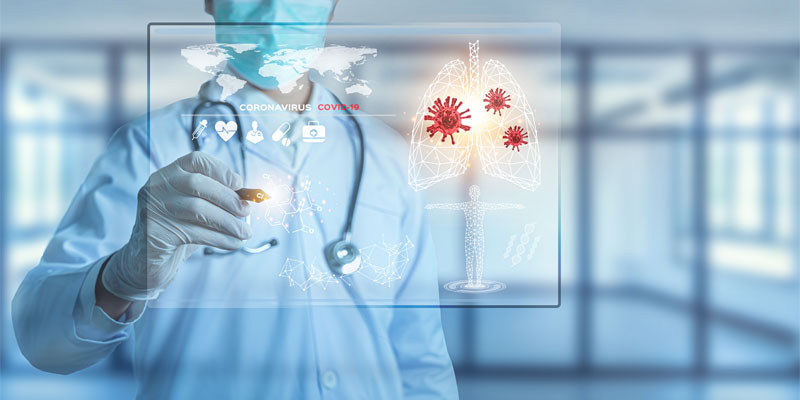Artificial intelligence joins humans in fight against COVID-19

As the COVID crisis continues, Albertans and all Canadians would surely welcome some good news among the bleak headlines. So consider this—we’ve learned a lot over the past few months about the remarkable ability of artificial intelligence (AI) and “machine learning” to help fight the disease and its health consequences.
In recent years, the rise of AI has raised many questions and fears. Many argue that AI will contribute to widespread unemployment, as ever-smarter computers programmed to achieve human-level intelligence would gradually replace human workers. In other words, will AI-equipped machines substitute for human intelligence or simply become complementary tools to assist humans to perform a smaller set of tasks much more efficiently?
The available evidence on AI labour-market effects is limited, and assertions typically assume that AI-equipped machines will displace most or all tasks currently performed by specific workers. However, the history of automation is that the substitution of capital for labour focuses on specific tasks, so that workers can specialize across a more limited set of tasks and do them more efficiently, while also being able to take on new tasks, perhaps in entirely new occupations.
The battle against COVID-19, while a unique experience, provides evidence (albeit anecdotal) that the workplace consequences of AI will reflect the historical experience of automation. Specifically, AI and machine learning (basically, when systems automatically learn and improve from experience without being explicitly programmed) are saving scientists and health-care workers time so they can focus on a smaller set of tasks, which they are able to do more efficiently than they would in the absence of automation.
For example, AI assistance in patient diagnoses. The standard polymerase chain reaction (PCR) diagnostic test for the coronavirus can take up to 12 hours to produce results. In many cases, this was too long for doctors to wait to make decisions about whether to isolate patients. In France, AI systems diagnose chest x-rays and estimate the probability of infection based on the scan. Preliminary studies found that the AI tool was comparable in its risk-assessment accuracy to human radiologists. In the United States, dozens of hospitals are using an AI system to predict which COVID-19 patients will become critically ill to help facilitate decisions about possible treatment protocols and to anticipate the demand for ventilators. AI is also being used to automate the creation of clinical notes, which gives caregivers more time to spend with patients.
Besides helping health-care providers perform some traditional tasks more efficiently, AI is also expanding the range of tasks and care options for providers. For example, AI is presenting patient data in a format that helps telehealth providers deal with new patients and work with geographically-separated teams to provide complicated care.
Finally, and perhaps most importantly in the long-run, researchers are using AI to accelerate the search for COVID treatments and vaccines. The standard approach relied on scientific experts to review and rate submitted research studies, which can take months. But AI-powered tools make it possible to review previous studies and prioritize directions for future research in mere minutes, thereby substantially reducing the amount of time required for peer reviews so scientists can devote more time on their own research.
While the COVID crisis has encouraged some forms of AI usage, many of these AI techniques will now be used regularly by scientists and doctors. And they will help scientists and engineers perform key tasks more efficiently rather than push them into the unemployment line.
Author:
Subscribe to the Fraser Institute
Get the latest news from the Fraser Institute on the latest research studies, news and events.

